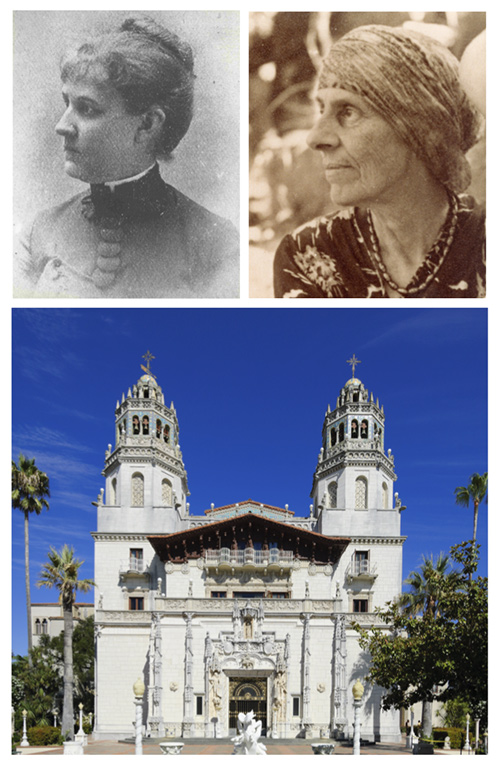If spring has you longing to experience destinations beyond your own back yard, this week's edition suggests some virtual alternatives to real-life travel. It spotlights locations that range from a stunning seasonal landscape in D.C. to red-carpet Hollywood, the ocean's coral reefs to the underworld as captured in literature's most famous travel diary.
They're among the offerings designed to make sure you continue to enjoy what you,ve come to value from Smithsonian Associates: programs and experiences that are entertaining, informative, eclectic, and insightful.
In the Pink
 National Cherry Blossom Festival
National Cherry Blossom Festival
One the most-anticipated times in Washington for both locals and visitors alike is the peak-bloom period of the Tidal Basin's ring of Yoshino cherry trees. This year the National Park Service predicts the blossoms will be at their best from April 2 to April 5. Because of Covid restrictions, the usual crowds won't be angling for selfie spots along the basin's banks, but now you can take in the beauty of the beloved trees right from your laptop. The Trust for the National Mall, National Park Service, and National Cherry Blossom Festival have teamed to offer a live Bloom Cam that will capture the scene in all its pink-hued glory. Get ready for your virtual visit by checking out Smithsonian magazine's collection of fun facts and lore about cherry blossoms.
Smithsonian Associates members are invited to a free online Smithsonian History Film Forum program on Thursday, April 1 that brings together director Yoruba Richen, executive directors Lacey Schwartz Delgado and Mehret Mandefro, and Fath Davis Ruffins, curator of African American history and culture at the Smithsonian's National Museum of American History, in a live conversation and Q&A session that focuses on how the film was made and the story it tells. (Registrants receive a link to stream the film on their own.)
Bloom Cam
Ten Fun Facts About Cherry Blossoms
The Eternal Dante
 Dante in a detail of a painting by Domenico di Michelino, Florence, 146
Dante in a detail of a painting by Domenico di Michelino, Florence, 146
Talk about an afterlife: Dante's epic Divine Comedy still engages readers today, even though it was written seven centuries ago. What can Dante's "dark wood," the space of crisis described in Inferno, teach us about our own pandemic world? In a Wednesday, May 19 Smithsonian Associates Streaming program, Joseph Luzzi, a professor of comparative literature at Bard College and author of In a Dark Wood: What Dante Taught Me About Grief, Healing, and the Mysteries of Love, explores the fascinating realm of Dante's epic poem in all its cultural and historical richness. He considers Dante's relation to his beloved Florence, his lacerating experience of exile, and his lifelong devotion to his muse Beatrice. He also shows readers how they can access Dante's work-without the need of footnotes-and discover the ways his timeless wisdom and insights can enhance our everyday lives.
Dante is among Italy's cultural icons, and last year its government declared March 25 the first annual Dantedì, or National Dante Day. (The date reflects the day during Easter week 1300 on which scholars believe the Divine Comedy's narrator began his journey into the realms of heaven, hell, and purgatory.) Washington's Italian Cultural Institute marks Dantedì with a free online program in which scholars explore how his work was received worldwide. And the Uffizi Gallery celebrates Dante with the digital exhibition To See the Stars Again, which brings together 88 high-definition images of illustrations of the Divine Comedy made by artist Federico Zuccari between 1586 and 1588. Smithsonian magazine reports on these rarely seen visions of Dante's timeless world.
Register for the Program
Learn More About Dantedì
The Uffizi's Online Exhibition
The Women Who Built a Profession
 Clockwise: Louise Blanchard Bethune; Marion Mahony Griffin (National Library of Australia); The Hearst Castle façade (Photo: King of Hearts)
Clockwise: Louise Blanchard Bethune; Marion Mahony Griffin (National Library of Australia); The Hearst Castle façade (Photo: King of Hearts)
During the late 19th and early 20th centuries, the emerging profession of architecture in America was very much a man's world. But several talented and tenacious women created doorways into it. Louise Blanchard Bethune became the first woman to establish an independent practice in the United States by opening an office with her husband in Buffalo, New York in 1881. Seven years later, she became the first female associate of the American Institute of Architects. In 1894, Marian Mahony was the second woman to graduate from MIT in architecture and later became the first woman registered as an architect in Illinois. Hired as Frank Lloyd Wright's first employee in 1895, she was responsible for much of the drawings produced at his Oak Park studio. In 1902 Julia Morgan was the first woman to receive a certificate in architecture from the prestigious École des Beaux-Arts in Paris, and two years later became the first woman architect licensed in California.
Lecturer Bill Keene examines the careers of these pioneering women and their importance in the development of the profession of architecture in a Wednesday, May 5 Smithsonian Associates Streaming program.
Learn the stories behind Blanchard Bethune's Hotel Lafayette in Buffalo, opened in 1904, and Morgan's opulent work at Hearst Castle, both among the "six wonders" built by women architects spotlighted by Smithsonian magazine.
Register for the Program
Read the Article
Oscar-Worthy Picks

The recent announcement of nominations for the 2021 Academy Awards confirmed that this has been a movie season unlike any that studios and audiences have experienced. Luckily, Washington City Paper film critic Noah Gittell is back for an evening that focuses on all things Oscar during this most dramatic of years. In a Wednesday, April 21 Smithsonian Associates Streaming program he sorts through all the story lines, behind-the-scenes buzz, rumors, and gossip so that when the telecast begins, you'll be the most knowledgeable guest at your virtual Oscar bash.
You can also satisfy your film-fan cravings with upcoming programs that focus on he past and future of moviegoing in America (Wednesday, May 12), music that enhanced screen adaptations of Shakespeare's plays (Saturday, May 22), and how the little studio that created a certain cartoon mouse evolved into a global entertainment powerhouse (Wednesday, June 9). Stock up on the popcorn.
Register for the Program
Rescuing the Reefs
 Rebecca Albright in the Steinhart Aquarium at the California Academy of Sciences (Photo: Kat Whitney)
Rebecca Albright in the Steinhart Aquarium at the California Academy of Sciences (Photo: Kat Whitney)
Coral reefs are unbelievably resilient ecosystems-if we give them a chance, says biologist Rebecca Albright of the California Academy of Sciences. While they cover less than one percent of the ocean floor, such reefs support approximately one-quarter of marine biodiversity and the livelihoods of tens of millions of people worldwide. As the world continues to warm and the oceans acidify, though, coral reef bleaching and erosion are advancing at staggering rates, endangering coastal protection, habitats, cultural services, and tourism. Despite the serious threats, Albright sees opportunities for exciting new ways to address this crisis. In a Thursday, April 15 Smithsonian Associates Streaming program, she shares an overview of the challenges that reefs are currently facing and solutions that scientists are exploring. She also highlights the strengths and limitations of current approaches, discusses next steps toward saving these invaluable ecosystems, and stresses the important roles of scientists, citizens, and policymakers in the efforts to sustain coral reefs.
In Australia, researchers are considering if cooled sea water pumped into the Great Barrier Reef-where water temperatures soared due to the widespread brush fires of 2020-might help reverse the bleaching damage sustained by nearly a quarter of the corals. Though the approach works in theory, the fossil-fuel energy needed to cool just one of the 3,100 reefs in the Great Barrier system would further add to the warming that leads to bleaching. The online Hakai magazine, which focuses on coastal science and societies, analyzes the merits and drawbacks of such an intervention.
Read the Stories